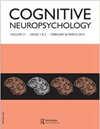The role of parvocellular and magnocellular shape maps in the derivation of spatially integrated 3D object representations
IF 1.7
3区 心理学
Q2 PSYCHOLOGY
引用次数: 1
Abstract
Our ability to effectively process visual information necessitates the transformation of sensory input from retinotopic to non-retinotopic representations of scene content. One fundamental question concerns the mechanisms, types of representation, and coordinate systems, that mediate these transformations. The complexity of their interactions makes this a formidable challenge. Davida’s case presents with a highly specific deficit affecting the mapping between representations of sensory input based on retinotopic coordinates and higher-level non-retinotopic reference frames. To account for her performance, the authors outline a theoretical proposal that makes several important claims. Among those are: (1) the existence of a level of intermediate shapecentred representation (ISCRs – or “shape maps”) that mediates the mapping between retinotopic and body-centred/spatiotopic representations of scene content; (2) the parallel derivation of independent ISCRs encoding object shape information via parvocellular (P-cell) and magnocellular (M-cell) channels. Davida’s impairment is assumed to arise from a selective deficit affecting the mapping between the proposed ISCR and body-centred/spatiotopic reference frames in the P-cell channel. This interesting proposal invites further speculation about the possible role of the proposed ISCRs in the derivation of spatially integrated representations of complex 3D object shapes – and their prospective role in object recognition. The question we discuss here is how this proposal might link to other recent work about the structure and functional organization of object shape representations in human vision. A growing body of evidence suggests that object representation in human vision is hierarchical, decompositional, and parts-based (e.g., Behrmann & Kimchi, 2003; Behrmann et al., 2006; Biederman, 1987; Hoffman & Richards, 1984; Leek et al., 2003; 2005; 2009; Reppa & Leek, 2003; Robertson & Lamb, 1991). These multi-level representations comprise elementary local features (e.g., edges and vertices), intermediate-level functional units (e.g., spatially bounded 2D regions approximating visible surface structure – Leek et al., 2005; Reppa et al., 2015; Marr & Nishihara, 1978; Palmer & Rock, 1994), and (on some accounts) higher-order primitives such as volumetric parts (e.g., Biederman, 1987; Marr & Nishihara, 1978). Evidence for this complex decompositional representational structure comes from both studies of neurologically intact, and brain-damaged, individuals. For example, there are case reports of patients with acquired object recognition impairments who have difficulty distinguishing among 3D objects that comprise the same geometric parts arranged in different 3D spatial configurations (e.g., Behrmann et al., 2006; Behrmann & Kimchi, 2003); studies showing complementary patterns of local-global feature representation deficits following unilateral brain lesions (Robertson & Lamb, 1991), and partsbased object identification errors associated with socalled integrative agnosia (e.g., Humphreys & Riddoch, 1987; Leek et al., 2012). Other work has小细胞和大细胞形状映射在空间集成三维对象表示的推导中的作用
我们有效处理视觉信息的能力需要将场景内容的感官输入从视黄主题转换为非视黄主题。一个基本问题涉及中介这些转换的机制、表示类型和坐标系统。他们互动的复杂性使这成为一个艰巨的挑战。Davida的病例存在高度特异性缺陷,影响了基于视黄醇坐标的感觉输入表示与更高级别的非视黄醇参考系之间的映射。为了说明她的表现,作者概述了一个理论建议,提出了几个重要的主张。其中包括:(1)中间以形状为中心的表示(ISCRs——或“形状图”)的存在,它介导了视觉主题和场景内容的以身体为中心/空间视觉表示之间的映射;(2) 通过小细胞(P细胞)和大细胞(M细胞)通道并行推导编码物体形状信息的独立ISCR。Davida的损伤被认为是由选择性缺陷引起的,该缺陷影响了所提出的ISCR和P细胞通道中以身体为中心/空间图参考帧之间的映射。这一有趣的提议引发了对所提出的ISCR在推导复杂三维物体形状的空间集成表示中的可能作用的进一步猜测,以及它们在物体识别中的预期作用。我们在这里讨论的问题是,这一建议如何与最近关于人类视觉中物体形状表示的结构和功能组织的其他工作联系起来。越来越多的证据表明,人类视觉中的物体表示是分层的、可分解的和基于部分的(例如,Behrmann&Kimchi,2003;Behrmann等人,2006;Biederman,1987;Hoffman&Richards,1984;Leek等人,2003;2005;2009;Reppa&Leek,2003;Robertson&Lamb,1991)。这些多层次表示包括基本局部特征(例如,边和顶点)、中间层次功能单元(例如,近似可见表面结构的空间有界2D区域——Leek等人,2005;Reppa等人,2015;Marr和Nishihara,1978;Palmer和Rock,1994),以及(在某些情况下)高阶基元,如体积部分(例如,Biederman,1987;Marr和Nishihara,1978)。这种复杂的分解表征结构的证据来自对神经系统完整和大脑受损个体的研究。例如,有获得性物体识别障碍患者的病例报告,他们难以在包括以不同3D空间配置排列的相同几何部分的3D物体之间进行区分(例如,Behrmann等人,2006;Behrmann&Kimchi,2003);显示单侧脑损伤后局部全局特征表征缺陷的互补模式的研究(Robertson&Lamb,1991),以及与所谓的综合性失认相关的基于部分的对象识别错误(例如,Humphreys和Riddoch,1987;Leek等人,2012)。其他工作
本文章由计算机程序翻译,如有差异,请以英文原文为准。
求助全文
约1分钟内获得全文
求助全文
来源期刊

Cognitive Neuropsychology
医学-心理学
CiteScore
5.50
自引率
11.80%
发文量
23
审稿时长
>12 weeks
期刊介绍:
Cognitive Neuropsychology is of interest to cognitive scientists and neuroscientists, neuropsychologists, neurologists, psycholinguists, speech pathologists, physiotherapists, and psychiatrists.
 求助内容:
求助内容: 应助结果提醒方式:
应助结果提醒方式:


